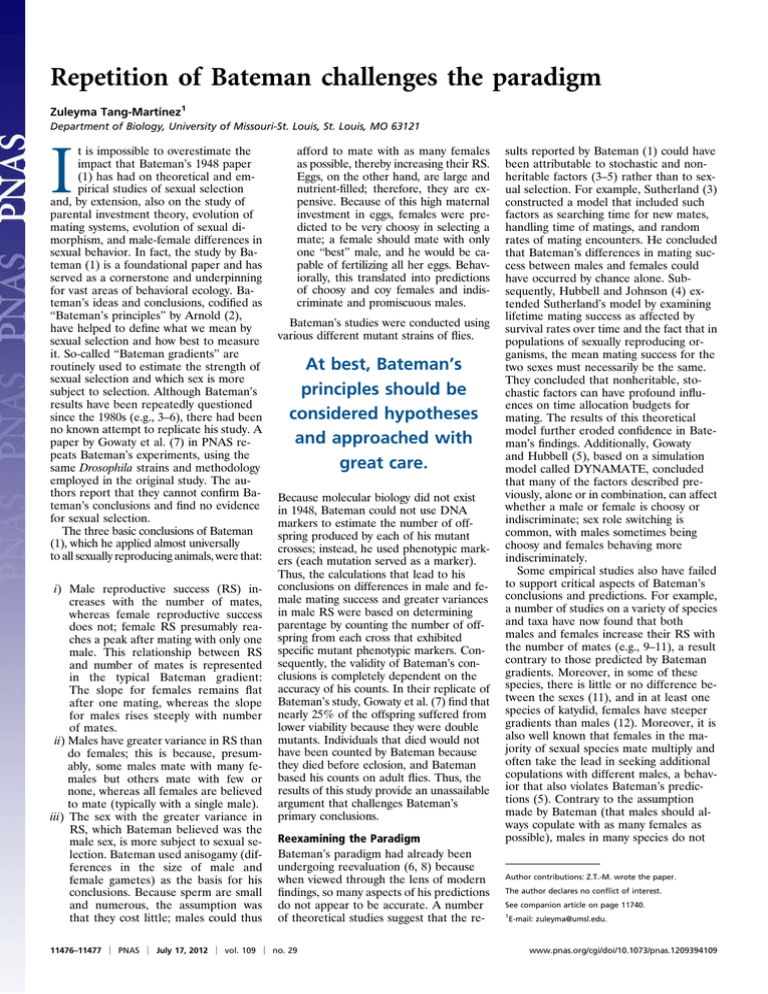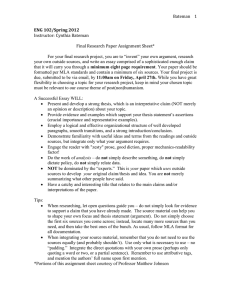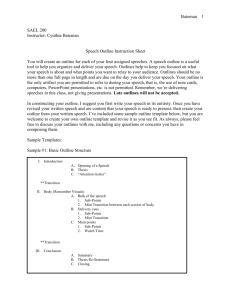
Repetition of Bateman challenges the paradigm
Zuleyma Tang-Martínez1
Department of Biology, University of Missouri-St. Louis, St. Louis, MO 63121
I
t is impossible to overestimate the
impact that Bateman’s 1948 paper
(1) has had on theoretical and empirical studies of sexual selection
and, by extension, also on the study of
parental investment theory, evolution of
mating systems, evolution of sexual dimorphism, and male-female differences in
sexual behavior. In fact, the study by Bateman (1) is a foundational paper and has
served as a cornerstone and underpinning
for vast areas of behavioral ecology. Bateman’s ideas and conclusions, codified as
“Bateman’s principles” by Arnold (2),
have helped to define what we mean by
sexual selection and how best to measure
it. So-called “Bateman gradients” are
routinely used to estimate the strength of
sexual selection and which sex is more
subject to selection. Although Bateman’s
results have been repeatedly questioned
since the 1980s (e.g., 3–6), there had been
no known attempt to replicate his study. A
paper by Gowaty et al. (7) in PNAS repeats Bateman’s experiments, using the
same Drosophila strains and methodology
employed in the original study. The authors report that they cannot confirm Bateman’s conclusions and find no evidence
for sexual selection.
The three basic conclusions of Bateman
(1), which he applied almost universally
to all sexually reproducing animals, were that:
i) Male reproductive success (RS) increases with the number of mates,
whereas female reproductive success
does not; female RS presumably reaches a peak after mating with only one
male. This relationship between RS
and number of mates is represented
in the typical Bateman gradient:
The slope for females remains flat
after one mating, whereas the slope
for males rises steeply with number
of mates.
ii) Males have greater variance in RS than
do females; this is because, presumably, some males mate with many females but others mate with few or
none, whereas all females are believed
to mate (typically with a single male).
iii) The sex with the greater variance in
RS, which Bateman believed was the
male sex, is more subject to sexual selection. Bateman used anisogamy (differences in the size of male and
female gametes) as the basis for his
conclusions. Because sperm are small
and numerous, the assumption was
that they cost little; males could thus
afford to mate with as many females
as possible, thereby increasing their RS.
Eggs, on the other hand, are large and
nutrient-filled; therefore, they are expensive. Because of this high maternal
investment in eggs, females were predicted to be very choosy in selecting a
mate; a female should mate with only
one “best” male, and he would be capable of fertilizing all her eggs. Behaviorally, this translated into predictions
of choosy and coy females and indiscriminate and promiscuous males.
Bateman’s studies were conducted using
various different mutant strains of flies.
At best, Bateman’s
principles should be
considered hypotheses
and approached with
great care.
Because molecular biology did not exist
in 1948, Bateman could not use DNA
markers to estimate the number of offspring produced by each of his mutant
crosses; instead, he used phenotypic markers (each mutation served as a marker).
Thus, the calculations that lead to his
conclusions on differences in male and female mating success and greater variances
in male RS were based on determining
parentage by counting the number of offspring from each cross that exhibited
specific mutant phenotypic markers. Consequently, the validity of Bateman’s conclusions is completely dependent on the
accuracy of his counts. In their replicate of
Bateman’s study, Gowaty et al. (7) find that
nearly 25% of the offspring suffered from
lower viability because they were double
mutants. Individuals that died would not
have been counted by Bateman because
they died before eclosion, and Bateman
based his counts on adult flies. Thus, the
results of this study provide an unassailable
argument that challenges Bateman’s
primary conclusions.
Reexamining the Paradigm
Bateman’s paradigm had already been
undergoing reevaluation (6, 8) because
when viewed through the lens of modern
findings, so many aspects of his predictions
do not appear to be accurate. A number
of theoretical studies suggest that the re-
11476–11477 | PNAS | July 17, 2012 | vol. 109 | no. 29
sults reported by Bateman (1) could have
been attributable to stochastic and nonheritable factors (3–5) rather than to sexual selection. For example, Sutherland (3)
constructed a model that included such
factors as searching time for new mates,
handling time of matings, and random
rates of mating encounters. He concluded
that Bateman’s differences in mating success between males and females could
have occurred by chance alone. Subsequently, Hubbell and Johnson (4) extended Sutherland’s model by examining
lifetime mating success as affected by
survival rates over time and the fact that in
populations of sexually reproducing organisms, the mean mating success for the
two sexes must necessarily be the same.
They concluded that nonheritable, stochastic factors can have profound influences on time allocation budgets for
mating. The results of this theoretical
model further eroded confidence in Bateman’s findings. Additionally, Gowaty
and Hubbell (5), based on a simulation
model called DYNAMATE, concluded
that many of the factors described previously, alone or in combination, can affect
whether a male or female is choosy or
indiscriminate; sex role switching is
common, with males sometimes being
choosy and females behaving more
indiscriminately.
Some empirical studies also have failed
to support critical aspects of Bateman’s
conclusions and predictions. For example,
a number of studies on a variety of species
and taxa have now found that both
males and females increase their RS with
the number of mates (e.g., 9–11), a result
contrary to those predicted by Bateman
gradients. Moreover, in some of these
species, there is little or no difference between the sexes (11), and in at least one
species of katydid, females have steeper
gradients than males (12). Moreover, it is
also well known that females in the majority of sexual species mate multiply and
often take the lead in seeking additional
copulations with different males, a behavior that also violates Bateman’s predictions (5). Contrary to the assumption
made by Bateman (that males should always copulate with as many females as
possible), males in many species do not
Author contributions: Z.T.-M. wrote the paper.
The author declares no conflict of interest.
See companion article on page 11740.
1
E-mail: zuleyma@umsl.edu.
www.pnas.org/cgi/doi/10.1073/pnas.1209394109
Supporting Data
However, it is fair to say that some studies
also have supported key conclusions advanced by Bateman. Specifically, Arnold
(2), working with a theoretical model,
concluded that Bateman’s ideas have significant merit. Likewise, some empirical
studies have reinforced the importance and
accuracy of some of Bateman’s predictions.
For example, in a study on the roughskinned newt (Taricha granulosa), Jones
et al. (17) used genetic paternity analysis
to construct Bateman gradients. They
found that males had greater variance
in both RS and number of mates and that
1. Bateman AJ (1948) Intra-sexual selection in Drosophila.
Heredity (Edinb) 2:349–368.
2. Arnold SJ (1994) Bateman principles and the measurement of sexual selection in plants and animals. Am Nat
144(Suppl):S126–S149.
3. Sutherland WJ (1985) Chance can produce sex differences in mating success and explain Bateman’s data.
Anim Behav 33:1339–1352.
4. Hubbell SP, Johnson LK (1987) Environmental variance
in lifetime mating success, mate choice, and sexual selection. Am Nat 130:91–112.
5. Gowaty PA, Hubbell SP (2005) Chance, time allocation,
and the evolution of adaptively flexible sex role behavior. Integr Comp Biol 45:931–944.
6. Tang-Martinez Z, Ryder TB (2005) The problem with
paradigms: Bateman’s worldview as a case study. Integr Comp Biol 45:821–830.
7. Gowaty PA, Kim Y-K, Anderson WW (2012) No evidence of sexual selection in a repetition of Bateman’s
classic study of Drosophila melanogaster. Proc Natl
Acad Sci USA 109:11740–11745.
Tang-Martínez
Conclusions
Taken together, all the preceding studies,
along with the replicate by Gowaty et al.
(7) in PNAS, suggest that, at best, Bateman’s principles should be considered
hypotheses and approached with great
care. For example, it is fairly common for
studies of Bateman gradients to disregard
alternative explanations, including the
null hypothesis that stochastic and nonheritable factors can produce results similar to Bateman’s (5, 20). Ideally, future
studies based on Bateman’s classic paper
(1) will explicitly consider and test such
alternative explanations.
Replication is a critical part of the
scientific process because it can lead to
the refutation of results that cannot be
repeated. It is interesting that for more
than 60 y, Bateman’s ideas served as a paradigm and were accepted fairly uncritically
without any known attempts at replication. The results obtained by Gowaty et al.
(7) are a major contribution that is likely
to lead to a paradigm shift in the study
of sexual selection and related topics. At
a minimum, the demonstration of viability
effects that bring into question the validity
of Bateman’s reported gradient poses
a major challenge to the Bateman paradigm and indicates that it is imperative
that his contributions and predictions
be reexamined.
8. Tang-Martínez Z (2010) Bateman’s Principles: Original
experiment and modern data for and against. Encyclopedia of Animal Behavior, eds Breed MD, Moore J (Academic Press, Oxford, UK), pp 166–176.
9. Woolfenden BE, Gibbs HL, Sealy SG (2002) High opportunity for sexual selection in both sexes of an obligate
brood parasitic bird, the brown-headed cowbird (Moluthrus ater). Behav Ecol Sociobiol 52:417–425.
10. Ketterson ED, et al. (1998) The relative impact of extrapair fertilizations on variation in male and female reproductive success in dark-eyed juncos (Junco hyemalis). Ornithological Monographs 49:81–101.
11. Williams RN, DeWoody JA (2009) Reproductive and
sexual selection in eastern wild tiger salamanders (Ambystoma t. tigrinum). Evol Biol 36:201–213.
12. Lorch PD, Bussière L, Gwynne DT (2008) Qualifying the
potential for sexual dimorphism using upper limits on
Bateman gradients. Behaviour 125(1):1–24.
13. Saether SA, Fiske P, Kålås JA (2001) Male mate choice,
sexual conflict and strategic allocation of copulations
in a lekking bird. Proc R Soc Lond B 268:2097–2102.
14. Arnaud L, Haubruge E (1999) Mating behaviour and
male mate choice in Tribolium castaneum (Coleoptera,
Tenbrionidae). Behaviour 136:67–77.
15. Wedell N, Gage MJG, Parker GA (2002) Sperm competition, male precedence, and sperm-limited females.
Trends Ecol Evol 17:313–320.
16. Snyder BF, Gowaty PA (2007) A reappraisal of Bateman’s classic study of intrasexual selection. Evolution
61:2457–2468.
17. Jones AG, Arguello JR, Arnold SJ (2002) Validation of
Bateman’s principles: A genetic study of sexual selection and mating patterns in the rough-skinned newt.
Proc Biol Sci 269:2533–2539.
18. Jones AG, Rosenqvist G, Berglund A, Arnold SJ,
Avise JC (2000) The Bateman gradient and the cause
of sexual selection in a sex-role-reversed pipefish. Proc
Biol Sci 267:677–680.
19. Bjork A, Pitnick S (2006) Intensity of sexual selection along
the anisogamy-isogamy continuum. Nature 441:742–745.
20. Gowaty PA (2004) Sexual Selection in Primates, eds
Kappeler P, van Schaik C (Cambridge Univ. Press, Cambridge, UK), pp 37–54.
the Bateman gradients were consistent
with Bateman’s predictions: significantly
steeper for males than for females. In another study, Jones et al. (18) investigated
the pipefish (Syngnathus typhle), a sex rolereversed species in which females compete
for males and males are choosy. In this
case, female RS increases with number of
mates and is significantly steeper than that
for males precisely in the manner predicted by Bateman for such species, suggesting that sexual selection in females is
stronger than it is in males. In another
notable study, Bjork and Pitnick (19) attempted a partial replicate of Bateman’s
study. Using several different species of
fruit flies, including Drosophila melanogaster, they generated Bateman gradients. They found greater differences
between males and females in more anisogamous species (i.e., species in which
there is a greater difference in the size of
eggs vs. sperm) and more similar gradients
when species were more isogamous (i.e.,
species in which the size of eggs and sperm
is more similar). These results, including
those for D. melanogaster, were consistent
with Bateman’s findings.
PNAS | July 17, 2012 | vol. 109 | no. 29 | 11477
COMMENTARY
mate indiscriminately and, in some cases,
may actually refuse to copulate with willing females (13, 14). We now know that
sperm depletion is a problem for many
males (15) and that this shortage of sperm
can result in sperm allocation (males may
give more sperm to certain females based
on their size, mating status, or health,
a form of mate choice, and can otherwise
behave very selectively when choosing
a mate). Moreover, methodological and
statistical reanalyses of Bateman’s experimental design and data have revealed numerous and serious problems, including
rampant pseudoreplication, mathematical
mistakes, and sampling biases (5, 16).






